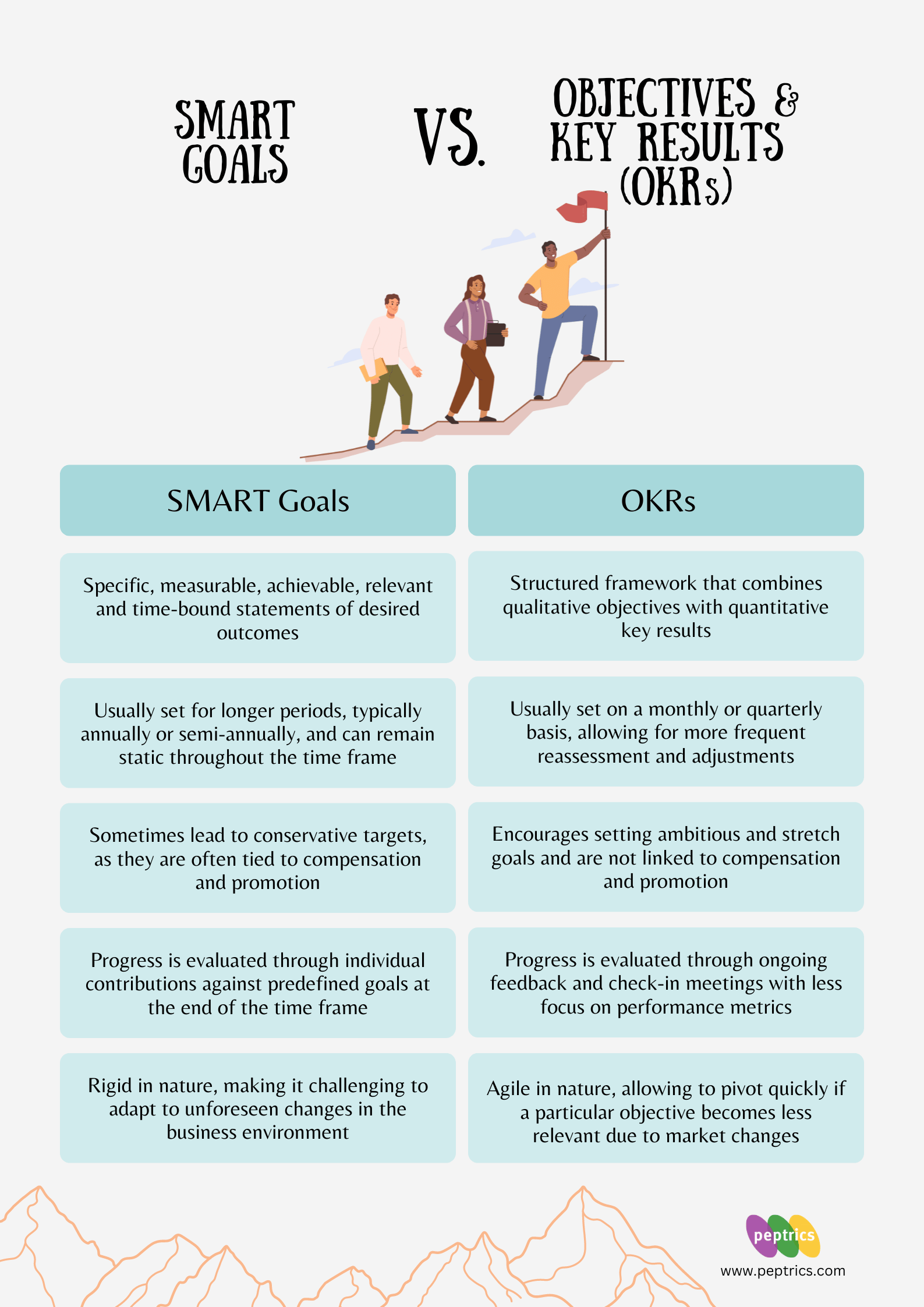The Difference Between SMART Goals and OKRs
Confused about whether to choose SMART goals or Objectives and Key Results (OKRs) for your performance management strategy? You are not alone! Though both these frameworks aim to enhance organizational performance, they do so in very different ways. Here’s a breakdown of their differences.
Structure
- SMART Goals: They are specific, measurable, achievable, relevant and time-bound statements of desired outcomes. For example, a SMART goal might look like “improve customer satisfaction by 25% within the next 3 years.”
- OKRs: They are a structured framework that combines qualitative objectives with quantitative key results. An objective is a clear, ambitious goal, while key results are specific metrics used to measure progress toward that objective. For instance, an OKR might be: “increase customer satisfaction” with key results such as “achieve an NPS of 80” and “reduce customer complaint response time to under 24 hours.”
Time Frame
- SMART Goals: They are usually set for longer periods, typically annually or semi-annually, and can remain static throughout that time frame.
- OKRs: They are usually set on a monthly or quarterly basis, allowing for more frequent reassessment and adjustments. This shorter cycle promotes agility and responsiveness to changing business conditions.
Focus
- SMART Goals: They can sometimes lead to conservative targets, as they often tie directly to compensation and promotion. Employees may set easily achievable goals to ensure they meet expectations.
- OKRs: They encourage setting ambitious, stretch goals that inspire innovation and creativity and are not linked to compensation and promotion. This approach fosters a culture where failure is seen as a learning opportunity rather than a setback, allowing teams to pursue more transformative initiatives.
Accountability
- SMART Goals: Progress is evaluated through individual contributions against predefined goals at the end of the time frame, focusing more on compliance rather than effectiveness. This can create a competitive atmosphere among employees.
- OKRs: Progress is evaluated through ongoing feedback and check-in meetings with less focus on performance metrics and compliance.
Flexibility
- SMART Goals: They are rigid in nature, making it challenging to adapt to unforeseen changes in the business environment
- OKRs: They are agile in nature, allowing to pivot quickly if a particular objective becomes less relevant due to market changes. If a particular objective becomes less relevant, teams can adjust their key results or even redefine their objectives without the constraints of a fixed time frame.

Understanding how to use SMART goals and OKRs effectively can be the key to unlocking your organization’s full potential. Our recommendation? Use both - SMART goals for setting long-term direction and OKRs for tactical alignment in the short-term. By integrating both, you can create a performance management strategy that promotes alignment, collaboration, and innovation.
